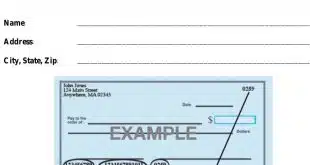A startup that lets consumers use their credit cards to make mortgage payments and meet other credit obligations online is talking to lenders about including its payment service when consumers close on loans. Because the service doesn't charge billers for payments, company officials expect the tie-ins will carry considerable appeal to mortgage lenders, student-loan servicers, and other such merchants that typically don't allow credit card payments because of acceptance costs. Eventually, says Mitch Friedman, co-founder of San Francisco-based ChargeSmart LLC, “we envision [ChargeSmart] as part of the loan package.” ChargeSmart's service, which debuted last week, says it can reach a network of 4,000 billers through unnamed intermediaries, whom Friedman calls “partner processors.” Currently, the ChargeSmart Web site includes only about 700 billers in the drop-down menus on its payment pages, including some 48 mortgage companies. Friedman says the object for now is to be sure to include the larger lenders that account for the bulk of payments. The 4,000 figure ChargeSmart advertises on its site “is definitely accurate,” he says. ChargeSmart, which accepts Visa and MasterCard, counts utilities and auto lenders among the billers it sends payments to, as well as mortgage lenders and student-loan companies. When a consumer makes a bill payment at ChargeSmart's site, the company stands in as the merchant, forwarding payments in full to billers via the automated clearing house. Since all transactions are on either credit or debit cards, ChargeSmart pays a discount fee on each transaction and charges consumers 2.29% plus $4.95. “Our profit is pretty much the $4.95,” says Friedman, an attorney, investor, and money manager who started ChargeSmart with other investors out of frustration at not being able to make mortgage payments with a credit card. Friedman says he knows of no mortgage companies that accept cards for one-time transactions, and only a few that will accept a card for recurring payments. Friedman says his group also took note when the Internal Revenue Service began accepting tax payments on credit cards, figuring there was demand for a service that would allow consumers to pay other obligations online with cards and earn rewards points. Typically, lenders won't accept cards because discount fees at such large sums add up to heavy costs that lenders prefer to avoid by taking payments via check or ACH. But ChargeSmart's greatest appeal could potentially be to billers, since it transfers transaction fees to consumers. “I suspect they're more than happy to have us around, to have us doing all the work,” says Friedman. Now, he says the company hopes to take the next step by cutting deals with lenders that would tie in ChargeSmart's payment service at the time of loan origination. “We are negotiating with lenders to make it easier to use [ChargeSmart] and make it available to people when they first take out the loan,” he says. The next step after that, he says, would be to incorporate ChargeSmart as a payment option on the lender's site. Such direct links with lenders could make sense, says Bruce Cundiff, senior analyst at Javelin Strategy & Research, Pleasanton, Calif. The strategy, he says, is “let's go upstream with that [payment system] and start it as a payment method at origination.” He cautions, however, that there are regulatory hoops ChargeSmart would have to negotiate with the bank card networks to become established as a recurring biller. For now, ChargeSmart is just starting to service its first consumer clients. Friedman says that, while the service wasn't announced until last week, “somehow a few people found it and used it” before the announcement. He says he has not made formal projections, but “wouldn't be surprised if [transaction volume] is north of 2 million transactions” by the middle of 2009. Five years out, he says, “I wouldn't be surprised if it's 10 million” annually. For his part, Cundiff says that while the service loads the transaction fees normally paid by merchants onto the shoulders of cardholders, consumers' lust for rewards points might be enough to attract significant volume. “It sounds feasible to get a decent number of consumers on board,” he says. These would likely be largely rewards-seekers, Cundiff says, not high credit risks. “I'm banking their model is people who can afford to put [these payments] on a credit card, not people who are looking for a financing solution,” he says.
Check Also
J.P. Morgan Payments Expands Its Reach Via Deals With Walmart And Affirm
The big payments provider J.P. Morgan Payments expanded its reach into different sectors this week …




